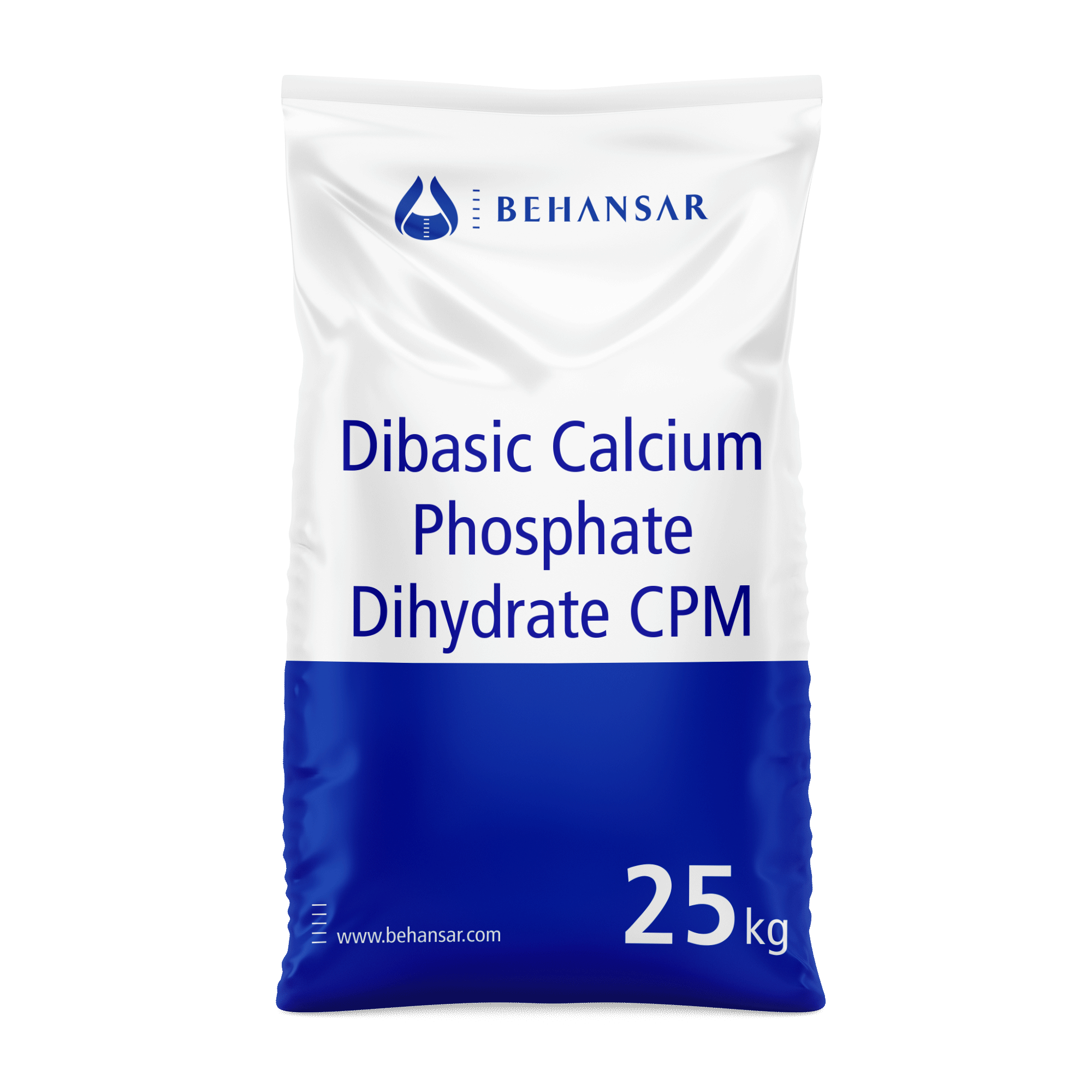Dibasic Calcium Phosphate Dihydrate CPM
| Chemical Formula: | CaHPO₄ · 2H2O |
| Molecular weight | 172.1 |
| .CAS No: | 7789-77-7 |
| Applications: |

About Dibasic Calcium Phosphate Dihydrate CPM
Calcium phosphate (CaP) is the common name of a family of minerals containing calcium cations (Ca2+) together with orthophosphate (PO43−), metaphosphate (PO3−), or pyrophosphate (P2O74−) anions, and sometimes hydrogen (H+) or hydroxide (OH−) ions. CaP is the principal form of calcium found in bovine milk and blood. It is the major inorganic constituent of bone (~60 wt % of bone), and the main constituent of tooth enamel (ca. 90%). Calcium phosphates with a Ca/P atomic ratio between 1.5 and 1.67 are called apatites (e.g., hydroxyapatite or fluorapatite).
Calcium phosphate (CaP) bioceramics are widely used in the field of bone regeneration, both in orthopedics and in dentistry, due to their good biocompatibility, osteointegration and osteoconduction.
Calcium phosphates are commonly used in medical applications in the form of cements, coatings, scaffolds, and paste.
Individual calcium phosphate phases like dibasic calcium phosphate dihydrate are the major members of the CaP family that are of interest to biomedical applications.
Dibasic calcium phosphate dihydrate (DCPD, Brushite)
DCPD is the most easily synthesized CaP compound. It is biocompatible, biodegradable, and osteoconductive, and can be converted into DCPA (pH 7). It is observed that DCPD can convert in vivo into either pHAp, or it will be degraded and replaced by bone. Brushite may form as an intermediary phase in pathological calcification occurring in slightly acidic media (for example, in dental calculi, urinary calculi, and urinary stones). DCPD has been proposed as an intermediate in both bone mineralization and dissolution of enamel in acids (dental erosion). In medicine, DCPD is used in CaP cements, and as an intermediate for tooth remineralization. DCPD is added to toothpaste both for caries protection (in this case, it is coupled with F-containing compounds such as NaF and/or Na2PO3F), and as a gentle polishing agent. When large amounts of DCPD are converted into pHAp in vivo, a severe inflammatory response can be observed due to the large amounts of acid that are released during this reaction. DCPD crystals can be prepared simply by neutralization of phosphoric acid with calcium hydroxide at pH between 3 and 4 at room temperature. In general, DCPD can be obtained by double decomposition between calcium and phosphate containing solutions in slightly acidic media. It can also be formed by conversion of calcium phosphate salts, in acidic media, or by reaction of calcium salts such as calcium carbonate in acidic orthophosphate solutions. DCPD crystals consist of CaPO4 chains arranged parallel to each other, while lattice water molecules are interlayered between them.
| Product Number | Product Name | Form | Pharmacopoeia | Solvency | Storage conditions | Color | Purity | Additional information |
|---|---|---|---|---|---|---|---|---|
| 151300118 | Dibasic Calcium Phosphate Dihydrate CPM | Powder | USP | Soluble in 3 N hydrochloric acid and in 2 N nitric acid; practically insoluble in water; insoluble in alcohol. | Preserve in well-closed containers. No storage requirements specified. | White powder | 98.0%-105.0% | Odorless, tasteless powder. Is stable in air. |

